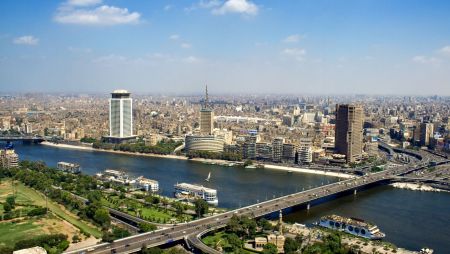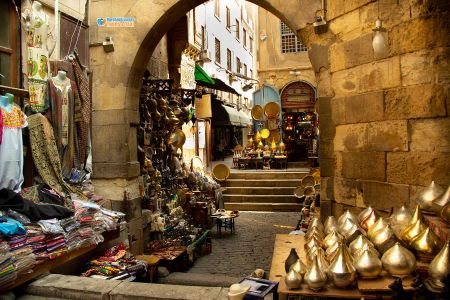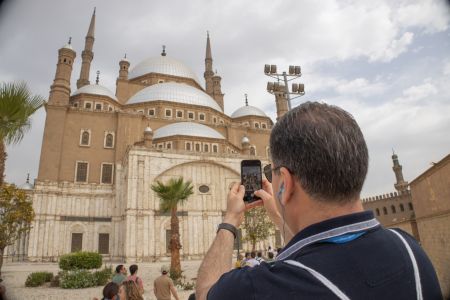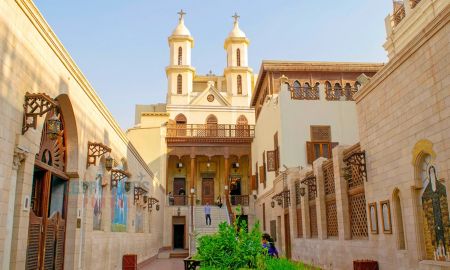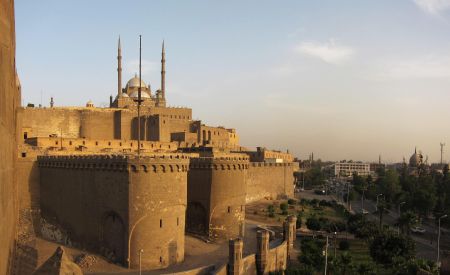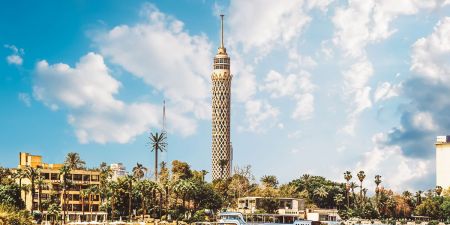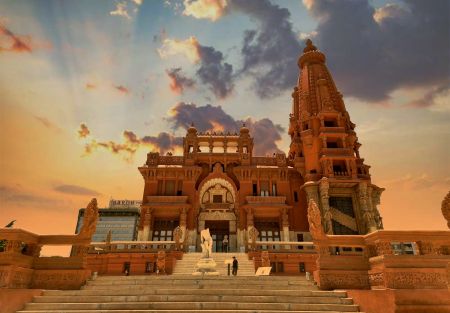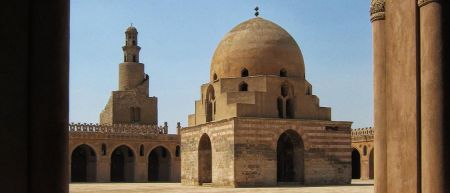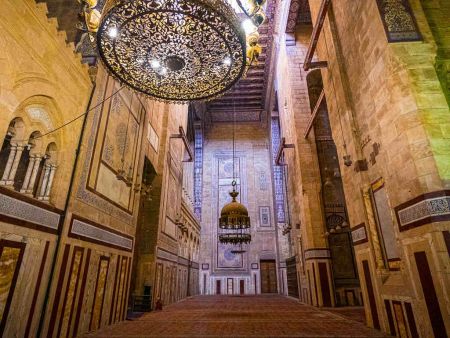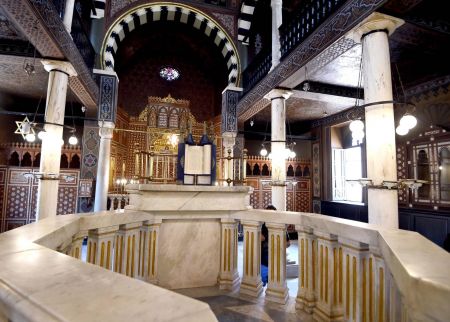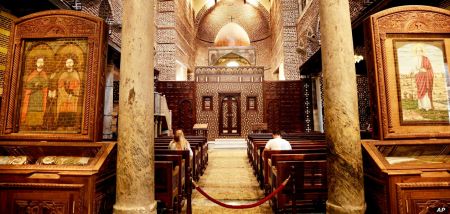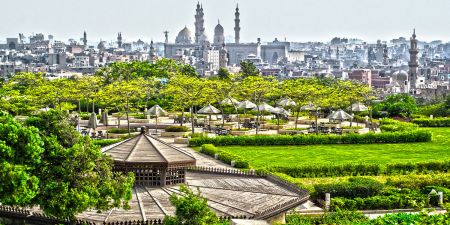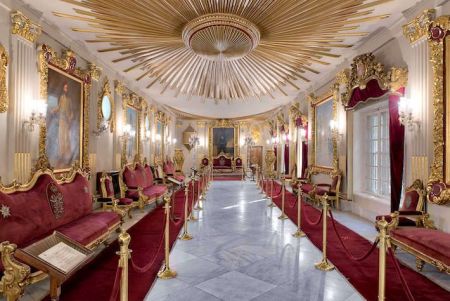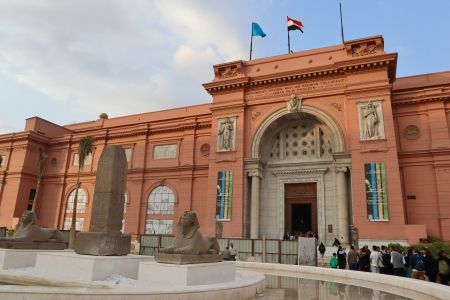Sultan Hassan Mosque : Cairo’s Monument of Power, Faith, and Architectural Perfection

In the heart of Islamic Cairo, overshadowing the Citadel and commanding the attention of all who enter the city’s ancient quarters, the Sultan Hassan Mosque stands as one of the most majestic religious monuments in the Islamic world. Built in the mid-14th century during the reign of Sultan an-Nasir Hassan of the Bahri Mamluks, the mosque is more than a place of worship—it is a bold declaration of imperial power, artistic genius, and religious devotion.
Often regarded as the finest example of Mamluk architecture in Egypt, this monumental complex seamlessly blends function and form. Its towering minarets, dramatic stonework, and intricately detailed interiors evoke a sense of spiritual gravity that few buildings can match. With its 38-meter-high entrance portal, colossal iwan halls, and a central courtyard bathed in light, Sultan Hassan Mosque isn’t just visited—it’s felt.
Today, it’s not only a centerpiece of Cairo’s religious landscape but also a popular destination for scholars, architects, and travelers. Whether you’re studying Mamluk history or simply drawn to Islamic art and architecture, the mosque offers a timeless encounter with faith, ambition, and beauty.
The History Behind Sultan Hassan Mosque
Commissioned by a Young Mamluk Sultan
Sultan Hassan ascended the throne at just 13 years old. Despite being dethroned and reinstated multiple times, his reign left behind one of Cairo’s most significant architectural marvels. Construction of the mosque began in 1356 AD and took nearly seven years to complete. Sadly, the Sultan was assassinated before seeing his masterpiece fully finished.
Built During a Period of Turmoil
The mosque’s construction occurred during a period of political instability, economic hardship, and the devastating impact of the Black Death. Nevertheless, Sultan Hassan spared no expense—levying taxes and using funds from confiscated estates to fund the project. It’s said that even during the plague, thousands of workers toiled day and night on the mosque, some giving their lives to complete it.
Intended as a Mosque and Madrasa
The complex wasn’t just a mosque—it functioned as a madrasa (Islamic school) for all four Sunni schools of jurisprudence: Hanafi, Maliki, Shafi’i, and Hanbali. This inclusive approach reflected a desire to unify Islamic thought and establish the Sultan as a religious as well as political authority.
Architectural Features of Sultan Hassan Mosque
Monumental Scale and Design
Measuring 150 meters long and 36 meters high, the mosque’s sheer size is overwhelming. The minaret rises 68 meters, making it one of the tallest in Egypt. The entrance portal alone stands at 38 meters, carved with geometric and floral patterns that display the finesse of Mamluk artisanship.
The Central Courtyard and Four Iwans
The interior is organized around a large open courtyard surrounded by four vaulted iwans, each representing one of the four Sunni schools. These iwans open toward the courtyard with towering arches, creating an immersive and meditative environment. In the center lies a marble fountain for ablutions, topped by a wooden dome.
The Qibla Iwan and Mihrab
The southern iwan—facing Mecca—is the largest and most ornate. It features a lavishly decorated mihrab with inlaid marble, carved stucco, and Qur'anic inscriptions. Hanging above is a massive iron chandelier, while the walls display symmetrical geometric mosaics, showcasing the mosque’s visual harmony.
The Mausoleum of Sultan Hassan
Attached to the mosque is the Sultan’s intended tomb chamber, which ironically remains empty due to his assassination. The mausoleum features a dome and an octagonal drum structure, richly decorated with Kufic script and marble panels. It remains a solemn yet elegant space within the grand complex.
From the Great Pyramids to the Egyptian Museum, our Cairo Day Tours bring you face-to-face with Egypt’s greatest treasures.
Don’t wait—book your day tour today!
Religious and Cultural Significance
A Center for Sunni Islamic Learning
At its peak, the Sultan Hassan Mosque was a vibrant center of Islamic education. Each of the four iwans housed scholars and students who studied theology, law, Arabic grammar, and logic. The architectural layout allowed for simultaneous teachings, creating a harmonious balance of diversity and unity in Islamic discourse.
Symbol of Mamluk Power and Piety
The mosque is not only a symbol of spiritual devotion but also a calculated statement of Mamluk dominance. Sultan Hassan intended to etch his name into Islamic history through architecture—and he succeeded. The mosque dwarfed all others in Cairo at the time, signaling the Sultan’s ambition to rival the great Islamic rulers of the past.
Influence on Later Islamic Architecture
The mosque’s design became a blueprint for later Islamic structures across Cairo and the broader Muslim world. Its balanced proportions, monumental scale, and integration of educational spaces with religious function influenced Ottoman mosque design centuries later.
Restoration and Preservation
Surviving Earthquakes and Time
The mosque has endured several earthquakes, including the one in 1419 AD, which brought down part of its minaret. Subsequent Mamluk and Ottoman rulers repaired the damage, though the mosque’s authenticity and integrity have been remarkably preserved over time.
Modern Restoration Efforts
Today, the mosque is managed by the Egyptian Ministry of Antiquities and remains in use for daily prayers and special religious events. Periodic conservation projects aim to preserve its stucco, calligraphy, and stonework while making the mosque accessible to tourists and scholars.
Visiting Sultan Hassan Mosque – A Spiritual Journey
Location and Access
The mosque is located directly opposite Salah El Din Citadel, in the historic district of Islamic Cairo. It's easily reachable by taxi or guided tour, and its proximity to the Al-Rifa'i Mosque makes it ideal for a double visit.
Opening Hours and Ticket Prices
Open daily, usually from 9 AM to 5 PM, the mosque charges a small entry fee for foreign visitors. Egyptians and students often benefit from reduced or free access. Dress modestly, and bring socks—shoes must be removed upon entry.
What to See Inside
Don’t miss the main iwans, mihrab, chandelier, mausoleum, and the calligraphy-covered walls. Look up to admire the intricately decorated domes, and take your time in the courtyard to appreciate the mosque’s acoustics and harmony.
Why Sultan Hassan Mosque Is a Must-See in Cairo
Sultan Hassan Mosque is a living testament to an era when religion, power, and architecture fused into one awe-inspiring entity. Its colossal dimensions, spiritual gravity, and exquisite artistry make it a standout landmark in Egypt’s architectural history. It doesn’t just tell the story of a Sultan—it tells the story of an empire’s vision, struggle, and legacy.
For those seeking more than just sightseeing, this mosque offers a deeper, more reflective encounter. It’s a place where stone speaks, silence teaches, and design becomes devotion.
Frequently Asked Questions About Sultan Hassan Mosque
Who built the Sultan Hassan Mosque?
The mosque was commissioned by Sultan an-Nasir Hassan of the Bahri Mamluks in 1356 AD and completed in 1363 AD.
What is unique about the mosque’s architecture?
Its immense scale, symmetrical iwans, richly decorated mihrab, and integration of a madrasa for all four Sunni schools make it unique in both design and purpose.
Can non-Muslims visit Sultan Hassan Mosque?
Yes, non-Muslims are welcome to visit outside prayer times. Respectful attire and behavior are required, and guided tours are available.
Is the Sultan buried in the mosque?
Although a mausoleum was built for Sultan Hassan, he was assassinated before its completion and was never buried there. His actual burial site remains uncertain.
What is the best time to visit the mosque?
Mornings offer soft lighting for photography and fewer crowds. Pair your visit with the nearby Al-Rifa’i Mosque and Citadel for a full historical experience.


